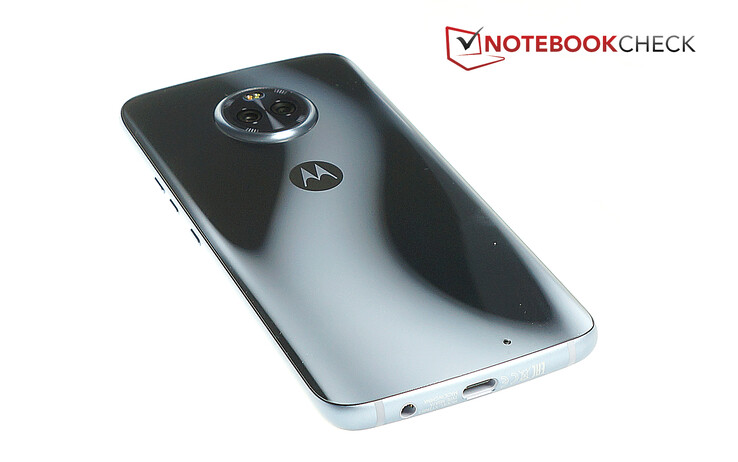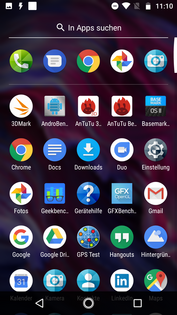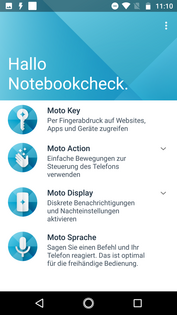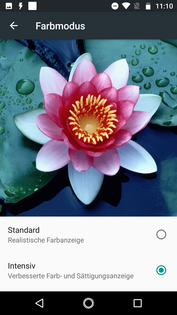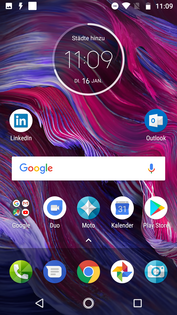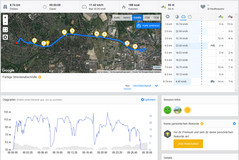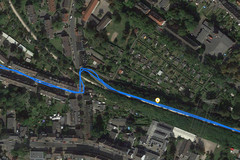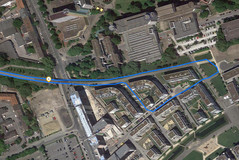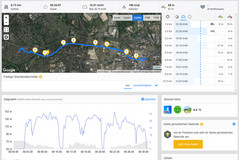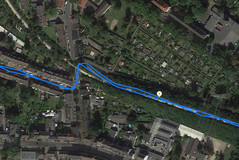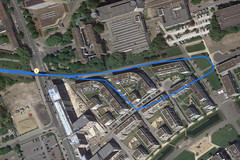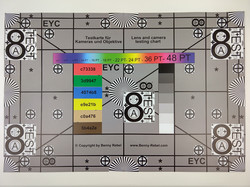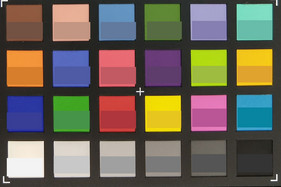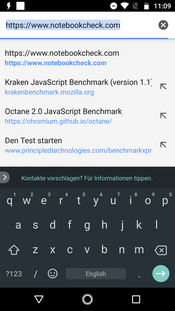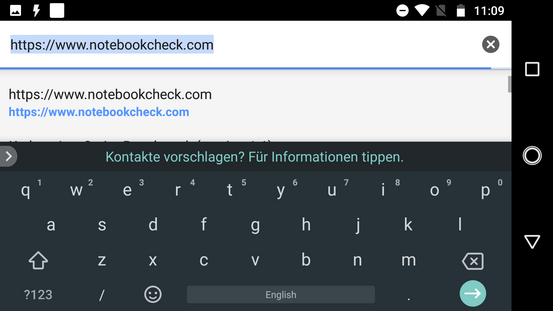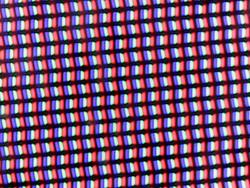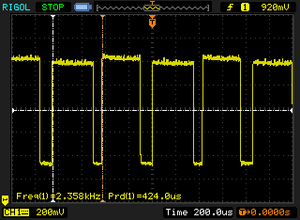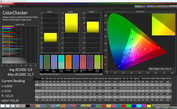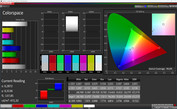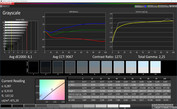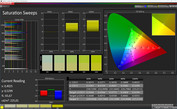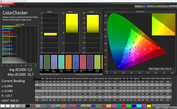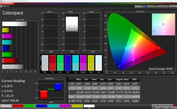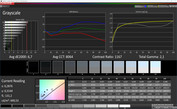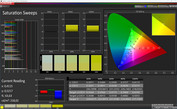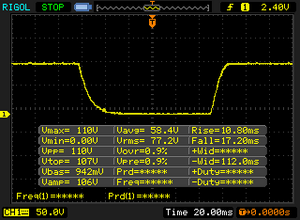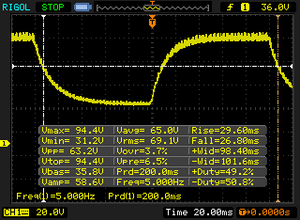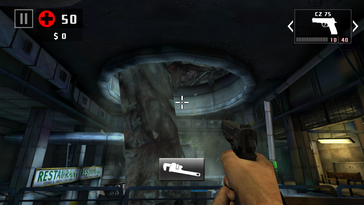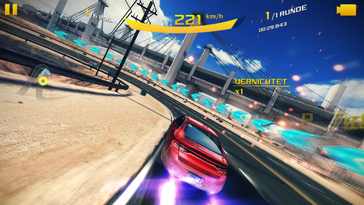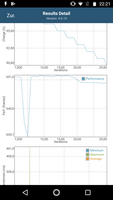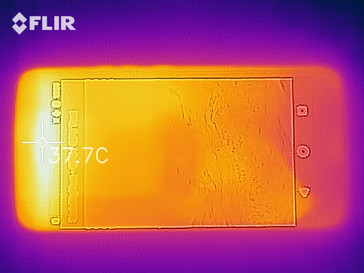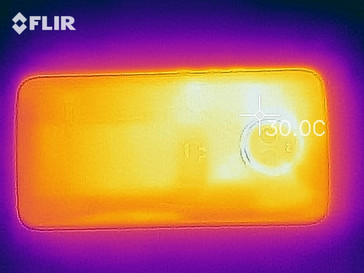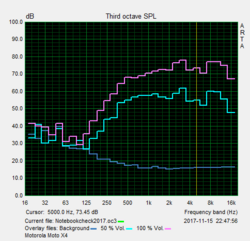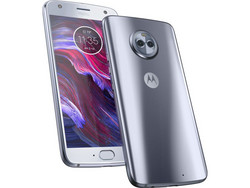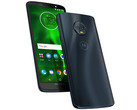Motorola Moto X4 Smartphone Review
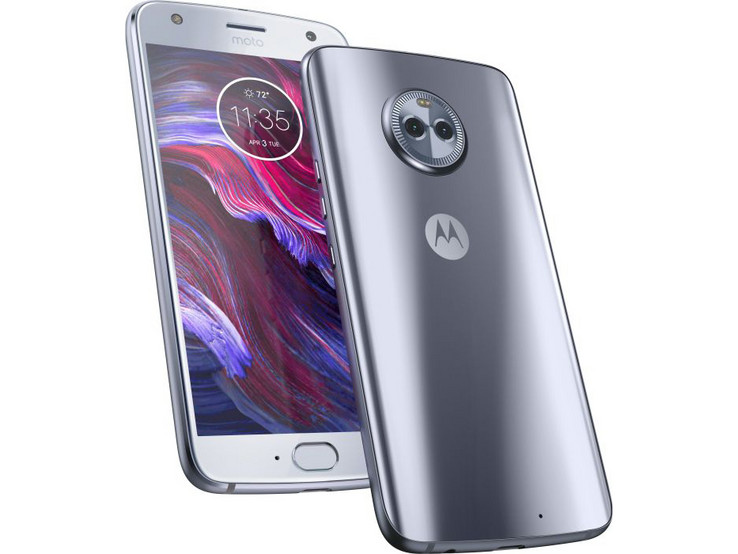
Motorola is placed really well within the midrange market: Customers can choose between three whole series of products. First, there are the Moto E4 and Moto E4 Plus, shuffling up the cheap midrange with their good equipment. The Moto G5s and the Moto G5s Plus are offering even better cameras and a unibody case and are placed in the price segment between 200 and 300 Euros (~$249 and ~$374). Customers willing to spend even more can now pick the Moto X4, a 5.2-inch smartphone with a dual camera, a midrange SoC and a case made of metal and glass that is protected against dust and water according to IP68. Furthermore, the manufacturer promises comprehensive voice control with as many as three integrated systems. Originally, Motorola set the asking price for this smartphone at 399 Euros (~$497), but by now the manufacturer is offering it for 349 Euros (~$435).
Many competitors can be found in this price range, such as the HTC U11 Life, the Honor 9, the Xiaomi Mi 6, or the Samsung Galaxy A3. The Asus ZenFone 4 is more expensive, but it is still of interest in a comparison because it uses the same SoC.
Case
The Moto X4 is delivered in plain black or in a somewhat livelier blue, like our test device. While the case frame is made of metal, the front and back are covered with glass. The transition between the different materials is clearly visible and can be felt as well. The smooth back is slightly curved at the sides, which gives the smartphone an elegant look and makes it easy to hold. Fingerprints are an issue, but more so for darker smartphones than for our test device.
This smartphone is very stable: It cannot be twisted, does not creak, and does not let any pressure on the front or back reach the screen. The measurements are mostly identical to those of other 5.2-inch smartphones, such as the HTC U11 Life. Following the Motorola tradition, it is rather slim, but has a protruding "bull's-eye" housing the camera module. Since the classic 16:9 build has been used, the front features comparatively wide bezels at the top and bottom, offering room for the fingerprint sensor. At 163 grams (~5.7 oz), the Moto X4 is not exactly lightweight for its screen size.
The case is protected against dust and water according to IP68, meaning that it is completely dustproof and can be submerged into water even for longer periods of time without any problems.
Connectivity
Motorola has equipped the Moto X4 with 3 GB of RAM and 32 GB of storage. A variant with 4 GB/64GB is available on the internet, but those seem to be imported devices. In Central Europe, the Moto X4 is only available as a dual-SIM variant. The storage can be expanded via a microSD card, but a SIM slot has to be sacrificed for this.
A 3.5-mm audio port has been built in despite the presence of a USB-C port, and a fingerprint reader can be found at the front of the case.
Software
Motorola is offering an Android One variant of the Moto X4 in some markets, but for us in Germany, the smartphone will be released with only the regular Motorola operating system. Since Motorola leaves Android in its original form anyway and barely installs any additional apps, the difference in the user interface is hardly noticeable. Android 7.1.1 is pre-installed, the current Android Oreo is supposed to be coming soon. The security patches are from November 1st 2017 and still tolerably up-to-date at the time of testing.
A few apps from the Microsoft ecosystem can be found on this smartphone, which is caused by Microsoft offering discounts on license payments if the manufacturer pre-installs these apps. In addition, there is the Moto app serving as a hub for the smartphone's individual features, such as configuring the Moto Display which shows information even when the screen is turned off. Moto Key is an interesting new feature which unlocks apps and even connected Windows PCs via a fingerprint on the Moto X4.
Communication and GPS
The Moto X4 supports all current Wi-Fi standards (802.11 a/b/g/n/ac) and is also compatible with Wi-Fi networks using the 5-GHz band. The Wi-Fi module is reasonably fast - only the Xiaomi Mi 6 was even faster in our comparison with the reference router Linksys EA8500. Close to the router, the connection has a good availability and pages are loading fast. At a distance of ten meters (~33 ft) or through walls, the signal is at half strength while pages are still loading about as fast as they did near the router.
The support for cellular networks is good as well: Eleven different LTE bands should facilitate mobile internet access, at least while traveling through Europe. The maximum download speed is 400 MBit/s. During our practical test within city boundaries in the German D2 network, we had at least half LTE capacity even inside buildings and we had good internet speed.
| Networking | |
| iperf3 transmit AX12 | |
| Xiaomi Mi 6 | |
| Motorola Moto X4 | |
| Asus ZenFone 4 ZE554KL | |
| HTC U11 Life | |
| Samsung Galaxy A3 2017 | |
| Honor 9 | |
| iperf3 receive AX12 | |
| Xiaomi Mi 6 | |
| Motorola Moto X4 | |
| Asus ZenFone 4 ZE554KL | |
| Samsung Galaxy A3 2017 | |
| Honor 9 | |
| HTC U11 Life | |
The built-in GPS module could not locate us in the middle of a room, but it reached an acceptable accuracy of eight meters (~26 ft) near a window. When outside, this accuracy rose to a peak value of four meters (~13 ft).
For a better evaluation of the GPS unit's usability in the field, we went on a bicycle ride for which we also brought along a Garmin Edge 500, a professional GPS unit specially designed for cyclists, in addition to the Motorola Moto X4. The distance measured by both devices differs by only ten meters (33 ft), which bodes well for our test device. The Moto X4 is actually slightly more accurate in the area of the houses on the screenshot titled "Path", but slightly less accurate than the professional GPS in the route calculation of the "Loop" screenshot. Overall, it is quite impressive that the GPS unit is roughly on a par with the professional GPS. Since the position finding on Google Maps is very fast and precise as well, we can recommend the Moto X4 for navigational purposes.
Telephony and Call Quality
Even if Motorola adjusted the telephone app's icon: This is still the standard Android app, which does not have to be replaced because it works pretty well.
When initiating a call, the conversation partner can be heard very clearly via the earpiece as well as the speakerphone, which can be turned to a rather high volume if desired. The microphone is average, transmitting our voice decently, but not always without ambient noise or distortions.
Cameras
Even midrange smartphones can barely do without a dual-camera setup nowadays. The Moto X4 is no exception, being equipped with two lenses on the back. One of the cameras is a standard model with 12 megapixels, the other a wide-angle-lens model with a resolution of 8 megapixels. The two lenses are not combined for an optical zoom, but can instead be used separately. In portrait mode, pictures can be created with a blur, but this effect is not produced with the second lens, but rather calculated by the software. Wide-angle photographs have a rather strong fisheye characteristic with the Moto X4, so objects at the edges are distorted, but the camera has a really wide coverage angle.
The camera's software uses an online object recognition and displays search results accordingly. For us, this worked reliably in only one of three cases. Not even the box of the Moto X4 was recognized reliably. Instead, the smartphone identifies it as the box of a Samsung Galaxy Note 5. In portrait mode, funny glasses or animal masks can be added to a photographed person via face recognition.
Even the standard lens of the Moto X4 offers a much wider viewing angle than the Aquaris X Pro or the Honor 9, for example. Pictures taken with the Honor 9 seem somewhat more colorful, but the Moto X4 takes very sharp pictures that also have an adequate brightness. However, this applies only for situations with good lighting - in low-light conditions; the competitors' devices capture significantly more light. For someone taking photos only in good lighting, the Moto X4 will yield good results, but other smartphones of the same price segment will take better pictures in low-light situations.
Video recording can be done with either of the two lenses, but only the standard lens supports 4K videos. The lighting in videos is generally good and the colors are strong. The brightness sensor has fast reaction times and adjusts the exposure, and the image noise is acceptable even in dark areas.
The front camera with 8 megapixels takes decent selfies with a good color representation and sharpness.
We took the Moto X4 to our test lab, where the main camera had to prove its worth under pre-determined lighting conditions. The edges of objects tend to contain image noise and color surfaces do not appear to be entirely clean. Sometimes, there is also a slight blurriness when displaying text. Overall, the performance was solid. The color reproduction is too pale in general and white surfaces have a visible brownish cast.
Accessories and Warranty
Motorola delivers the smartphone with a quick charger, a USB cable, and a SIM tool. An additional charger is available from Motorola for about 30 Euros (~$37).
The manufacturer offers a warranty of 24 months for their smartphones. Please see our Guarantees, Return Policies and Warranties FAQ for country-specific information.
Input Devices and Handling
The keyboard app is Google's GBoard, which is pre-installed on all devices with a pure Android. Typing is easy with this app and there are many customization options available. Anyone who would prefer a different keyboard should take a look at the Google Play Store which offers numerous alternatives.
Fingers glide easily on the touchscreen and even the corners are very sensitive. The Moto app enables the user to activate additional commands. For example, the fingerprint sensor can be used instead of the menu buttons on the screen to return to the Home screen, to use the "back" function or to open an overview of apps currently in use. After a short adaptation phase, this works very intuitively and reliably. The fingerprint sensor is also rather fast in its original function and can also wake the device from standby mode.
Several gestures can be activated in the Moto app, for example the camera can be activated by turning the smartphone twice or the screen can be downsized for one-handed operation by swiping to the lower left.
Voice control is a feature that Motorola highlights especially. As many as three systems are used for this: First, an internal system that is able to comprehend easy commands such as "Show me my calendar", but that can also be used for unlocking the device via voice recognition. Second, there is the Google Assistant and third, Amazon Alexa. However, there was one peculiarity with this: The feature that enables the Moto X4 to listen even while in standby was activated, but the Moto Alexa app has to be downloaded via the Play Store. Since it was not available at the time of our testing, we notified the manufacturer about this and we will provide you with a short update about this feature once the app is available again. Generally, the two systems that we could activate worked really well and are not interfering with each other because each of them is using distinct activation words.
Display
The Moto X4 utilizes an IPS screen with Full HD resolution. At an average of 479 cd/m², the 5.2-inch display is not quite as bright as comparison devices and the brightness is also less evenly distributed at 86%. The decrease in brightness towards the lower part of the screen is slightly visible even to the naked eye.
Furthermore, we noticed a flickering of the screen at a high frequency of 2358 Hz at low brightness settings. This is probably caused by the Pulse-Width Modulation, which is used to dim the brightness. Since the frequency is rather high, even sensitive people should not experience any problems.
| |||||||||||||||||||||||||
Brightness Distribution: 86 %
Center on Battery: 469 cd/m²
Contrast: 1268:1 (Black: 0.37 cd/m²)
ΔE ColorChecker Calman: 5.5 | ∀{0.5-29.43 Ø4.78}
ΔE Greyscale Calman: 6.7 | ∀{0.09-98 Ø5}
Gamma: 2.1
CCT: 8064 K
| Motorola Moto X4 LTPS IPS, 1920x1080, 5.2" | HTC U11 Life SLCD, 1920x1080, 5.2" | Samsung Galaxy A3 2017 Super AMOLED, 1280x720, 4.7" | Honor 9 IPS/LTPS, 1920x1080, 5.2" | Xiaomi Mi 6 IPS, 1920x1080, 5.2" | Asus ZenFone 4 ZE554KL IPS, 1920x1080, 5.5" | |
|---|---|---|---|---|---|---|
| Screen | 8% | 41% | 21% | 26% | 19% | |
| Brightness middle (cd/m²) | 469 | 545 16% | 574 22% | 550 17% | 620 32% | 656 40% |
| Brightness (cd/m²) | 479 | 526 10% | 576 20% | 535 12% | 586 22% | 634 32% |
| Brightness Distribution (%) | 86 | 87 1% | 94 9% | 92 7% | 89 3% | 93 8% |
| Black Level * (cd/m²) | 0.37 | 0.42 -14% | 0.42 -14% | 0.28 24% | 0.4 -8% | |
| Contrast (:1) | 1268 | 1298 2% | 1310 3% | 2214 75% | 1640 29% | |
| Colorchecker dE 2000 * | 5.5 | 4.9 11% | 2.4 56% | 3.3 40% | 4.8 13% | 5.3 4% |
| Colorchecker dE 2000 max. * | 10.7 | 8.5 21% | 3.8 64% | 4.5 58% | 8.8 18% | 7.8 27% |
| Greyscale dE 2000 * | 6.7 | 5.4 19% | 1.9 72% | 3.6 46% | 5.3 21% | 5.2 22% |
| Gamma | 2.1 105% | 2.31 95% | 2.09 105% | 2.38 92% | 2.25 98% | 2.22 99% |
| CCT | 8064 81% | 7610 85% | 6502 100% | 7226 90% | 7473 87% | 7905 82% |
* ... smaller is better
Screen Flickering / PWM (Pulse-Width Modulation)
| Screen flickering / PWM detected | 2358 Hz | ≤ 3 % brightness setting | |
The display backlight flickers at 2358 Hz (worst case, e.g., utilizing PWM) Flickering detected at a brightness setting of 3 % and below. There should be no flickering or PWM above this brightness setting. The frequency of 2358 Hz is quite high, so most users sensitive to PWM should not notice any flickering. In comparison: 53 % of all tested devices do not use PWM to dim the display. If PWM was detected, an average of 8098 (minimum: 5 - maximum: 343500) Hz was measured. | |||
The black level is decent at 0.37 cd/m² and black areas appear deep and dark. At 1268:1, the contrast is slightly lower than it is for the comparison devices. The smartphone is shipped with two different modes for color accuracy: standard and intense. Our subjective impression was that the colors in both of those modes appeared somewhat too cool on the screen.
We wanted more details and used our spectrophotometer and the CalMAN software to determine with objective measurements how the screen of the Moto X4 displays colors. Both modes showed a significant blue tint on the display, which was even stronger in "intense" mode. To counteract this, users can activate a blue light filter in the Moto app if they wish so. The color space coverage for sRGB is almost complete in both modes, though CalMAN is not able to give us an absolutely exact result. The color accuracy is mediocre in both modes.
Display Response Times
| ↔ Response Time Black to White | ||
|---|---|---|
| 28 ms ... rise ↗ and fall ↘ combined | ↗ 10.8 ms rise | |
| ↘ 17.2 ms fall | ||
| The screen shows relatively slow response rates in our tests and may be too slow for gamers. In comparison, all tested devices range from 0.1 (minimum) to 240 (maximum) ms. » 70 % of all devices are better. This means that the measured response time is worse than the average of all tested devices (20.2 ms). | ||
| ↔ Response Time 50% Grey to 80% Grey | ||
| 56.4 ms ... rise ↗ and fall ↘ combined | ↗ 29.6 ms rise | |
| ↘ 26.8 ms fall | ||
| The screen shows slow response rates in our tests and will be unsatisfactory for gamers. In comparison, all tested devices range from 0.165 (minimum) to 636 (maximum) ms. » 93 % of all devices are better. This means that the measured response time is worse than the average of all tested devices (31.6 ms). | ||
Outdoors, the Moto X4 is doing well despite the glossy screen, and the ambient light sensor is quick to react. A shift in the brightness is visible to the naked eye when tilting the smartphone to the side. It is even more noticeable with the reflex camera that we used to take our viewing angle pictures.
Performance
The Qualcomm Snapdragon 630 is a fast midrange SoC with 8 processor cores. In terms of performance, the Moto X4 is on a par with the HTC U11 Life or the Asus ZenFone 4, both of which use the same SoC as our test device. The Galaxy A3 drops behind slightly, while the Honor 9 can score with its fast high-end SoC. The Adreno 508 places the Moto X4 in the upper midrange for graphics as well.
| AnTuTu v6 - Total Score (sort by value) | |
| Motorola Moto X4 | |
| HTC U11 Life | |
| Samsung Galaxy A3 2017 | |
| Honor 9 | |
| Xiaomi Mi 6 | |
| Asus ZenFone 4 ZE554KL | |
| PCMark for Android | |
| Work performance score (sort by value) | |
| Motorola Moto X4 | |
| HTC U11 Life | |
| Samsung Galaxy A3 2017 | |
| Honor 9 | |
| Xiaomi Mi 6 | |
| Asus ZenFone 4 ZE554KL | |
| Work 2.0 performance score (sort by value) | |
| Motorola Moto X4 | |
| HTC U11 Life | |
| Samsung Galaxy A3 2017 | |
| Honor 9 | |
| Xiaomi Mi 6 | |
| Asus ZenFone 4 ZE554KL | |
| Geekbench 4.4 | |
| 64 Bit Single-Core Score (sort by value) | |
| Motorola Moto X4 | |
| HTC U11 Life | |
| Honor 9 | |
| Xiaomi Mi 6 | |
| Asus ZenFone 4 ZE554KL | |
| 64 Bit Multi-Core Score (sort by value) | |
| Motorola Moto X4 | |
| HTC U11 Life | |
| Honor 9 | |
| Xiaomi Mi 6 | |
| Asus ZenFone 4 ZE554KL | |
| Compute RenderScript Score (sort by value) | |
| Motorola Moto X4 | |
| HTC U11 Life | |
| Honor 9 | |
| Asus ZenFone 4 ZE554KL | |
| GFXBench (DX / GLBenchmark) 2.7 | |
| T-Rex Onscreen (sort by value) | |
| Motorola Moto X4 | |
| HTC U11 Life | |
| Samsung Galaxy A3 2017 | |
| Honor 9 | |
| Xiaomi Mi 6 | |
| Asus ZenFone 4 ZE554KL | |
| 1920x1080 T-Rex Offscreen (sort by value) | |
| Motorola Moto X4 | |
| HTC U11 Life | |
| Samsung Galaxy A3 2017 | |
| Honor 9 | |
| Xiaomi Mi 6 | |
| Asus ZenFone 4 ZE554KL | |
| GFXBench 3.0 | |
| on screen Manhattan Onscreen OGL (sort by value) | |
| Motorola Moto X4 | |
| HTC U11 Life | |
| Samsung Galaxy A3 2017 | |
| Honor 9 | |
| Xiaomi Mi 6 | |
| Asus ZenFone 4 ZE554KL | |
| 1920x1080 1080p Manhattan Offscreen (sort by value) | |
| Motorola Moto X4 | |
| HTC U11 Life | |
| Samsung Galaxy A3 2017 | |
| Honor 9 | |
| Xiaomi Mi 6 | |
| Asus ZenFone 4 ZE554KL | |
| GFXBench 3.1 | |
| on screen Manhattan ES 3.1 Onscreen (sort by value) | |
| Motorola Moto X4 | |
| HTC U11 Life | |
| Samsung Galaxy A3 2017 | |
| Honor 9 | |
| Xiaomi Mi 6 | |
| Asus ZenFone 4 ZE554KL | |
| 1920x1080 Manhattan ES 3.1 Offscreen (sort by value) | |
| Motorola Moto X4 | |
| HTC U11 Life | |
| Samsung Galaxy A3 2017 | |
| Honor 9 | |
| Xiaomi Mi 6 | |
| Asus ZenFone 4 ZE554KL | |
| GFXBench | |
| on screen Car Chase Onscreen (sort by value) | |
| Motorola Moto X4 | |
| HTC U11 Life | |
| Samsung Galaxy A3 2017 | |
| Honor 9 | |
| Xiaomi Mi 6 | |
| Asus ZenFone 4 ZE554KL | |
| 1920x1080 Car Chase Offscreen (sort by value) | |
| Motorola Moto X4 | |
| HTC U11 Life | |
| Samsung Galaxy A3 2017 | |
| Honor 9 | |
| Xiaomi Mi 6 | |
| Asus ZenFone 4 ZE554KL | |
| Lightmark - 1920x1080 1080p (sort by value) | |
| Xiaomi Mi 6 | |
| Asus ZenFone 4 ZE554KL | |
| Basemark X 1.1 - High Quality (sort by value) | |
| Xiaomi Mi 6 | |
| Basemark ES 3.1 / Metal - offscreen Overall Score (sort by value) | |
| Xiaomi Mi 6 | |
| Asus ZenFone 4 ZE554KL | |
| Epic Citadel - Ultra High Quality (sort by value) | |
| Xiaomi Mi 6 | |
The Moto X4 has consistently been slightly faster than, for example, the Asus ZenFone 4 in our browser benchmarks. The differences were not huge, but still noticeable. Websites load at an average speed on the Moto X4, complex HTML5 sites such as Google's Interland load pretty fast and show only the occasional, minimal stutter.
| JetStream 1.1 - Total Score | |
| Xiaomi Mi 6 (Chrome Version 58) | |
| Honor 9 (Chrome 59) | |
| Motorola Moto X4 (Chrome 63) | |
| HTC U11 Life (Chrome 63) | |
| Asus ZenFone 4 ZE554KL (Chrome 62) | |
| Samsung Galaxy A3 2017 (Chrome 56.0.2924.87) | |
| Octane V2 - Total Score | |
| Xiaomi Mi 6 (Chrome Version 58) | |
| Honor 9 (Chrome 59) | |
| Motorola Moto X4 (Chrome 63) | |
| HTC U11 Life (Chrome 63) | |
| Asus ZenFone 4 ZE554KL (Chrome 62) | |
| Samsung Galaxy A3 2017 (Chrome 56.0.2924.87) | |
| Mozilla Kraken 1.1 - Total | |
| Samsung Galaxy A3 2017 (Chrome 56.0.2924.87) | |
| HTC U11 Life (Chrome 63) | |
| Asus ZenFone 4 ZE554KL (Chrome 62) | |
| Motorola Moto X4 (Chrome 63) | |
| Honor 9 (Chrome 59) | |
| Xiaomi Mi 6 (Chrome Version 58) | |
| WebXPRT 2015 - Overall | |
| Honor 9 (Chrome 59) | |
| HTC U11 Life (Chrome 63) | |
| Asus ZenFone 4 ZE554KL (Chrome 62) | |
| Motorola Moto X4 (Chrome 63) | |
| Samsung Galaxy A3 2017 (Chrome 56.0.2924.87) | |
* ... smaller is better
Accessing our reference storage card, a Toshiba Exceria M501, works rather fast. The Honor 9 drops behind the other comparison devices here and the Xiaomi Mi 6 does not support microSD cards. Reading from and writing to the Moto X4's internal storage is quick as well, but the Mi 6 takes a clear lead here with its fast UFS 2.1 storage.
| Motorola Moto X4 | HTC U11 Life | Samsung Galaxy A3 2017 | Honor 9 | Xiaomi Mi 6 | Asus ZenFone 4 ZE554KL | |
|---|---|---|---|---|---|---|
| AndroBench 3-5 | -5% | -42% | -1% | 96% | 9% | |
| Sequential Read 256KB (MB/s) | 281.6 | 268 -5% | 199.7 -29% | 293 4% | 728 159% | 287.4 2% |
| Sequential Write 256KB (MB/s) | 120.5 | 120 0% | 45.96 -62% | 204 69% | 196.7 63% | 205.3 70% |
| Random Read 4KB (MB/s) | 45.4 | 39.3 -13% | 22.32 -51% | 55.7 23% | 143.5 216% | 68.6 51% |
| Random Write 4KB (MB/s) | 55.3 | 50.2 -9% | 9.62 -83% | 32.7 -41% | 25.19 -54% | 7.59 -86% |
| Sequential Read 256KB SDCard (MB/s) | 83.9 ? | 82.8 ? -1% | 75.5 ? -10% | 68 ? -19% | 86.9 ? 4% | |
| Sequential Write 256KB SDCard (MB/s) | 60 ? | 59.8 ? 0% | 50.1 ? -16% | 34.64 ? -42% | 66.5 ? 11% |
Games
Every game we tested ran smoothly in the screen's native resolution. When playing “Asphalt 8”, even high details were no problem for the Motorola Moto X4. There were no issues with simpler games such as “Angry Birds” either.
Controlling the games via position sensor and touchscreen always worked precisely during our tests.
| Asphalt 8: Airborne | |||
| Settings | Value | ||
| high | 30 fps | ||
| very low | 30 fps | ||
| Dead Trigger 2 | |||
| Settings | Value | ||
| high | 30 fps | ||
Emissions
Temperature
The area of the ear piece, of all places, is where the case warms up the most. At 36.3 °C (~97 °F), the temperature is fortunately not too high even after a prolonged period of load, so that the smartphone can still be placed near one's ear for a call or be carried around in one's pants pocket. The rest of the case hardly heats up and the differences to idle mode were only small.
Hence, it is no surprise that we barely saw any fluctuations of the frame rate during our GFXBench battery test. Other than one lapse at the start, the performance remains high, even under a prolonged load.
(+) The maximum temperature on the upper side is 36.3 °C / 97 F, compared to the average of 35.2 °C / 95 F, ranging from 21.9 to 247 °C for the class Smartphone.
(+) The bottom heats up to a maximum of 30 °C / 86 F, compared to the average of 34 °C / 93 F
(+) In idle usage, the average temperature for the upper side is 28.5 °C / 83 F, compared to the device average of 32.9 °C / 91 F.
Speakers
The small front pointing speaker offers a relatively balanced sound which can be turned to a rather high volume on demand. Since the low mids are pretty strong while the highs are attenuated slightly, the sound overall is a much more pleasant experience than with the HTC U11 Life, for instance. Even when connecting a Bluetooth device or a headphone via the 3.5-mm audio port, the sound output is very clear.
Motorola has added a bonus feature named "wireless audio system". This feature enables the user to connect to multiple Bluetooth devices simultaneously, even if they are located in different rooms. However, this feature deactivates any existing connections to other Bluetooth devices, such as a connected smartwatch. It is even possible to connect several speakers into a sound system. Additional features such as the ability to control the smartphone via the buttons of connected devices are announced to be delivered in a later update.
Motorola Moto X4 audio analysis
(+) | speakers can play relatively loud (85.9 dB)
Bass 100 - 315 Hz
(-) | nearly no bass - on average 25.4% lower than median
(±) | linearity of bass is average (10.4% delta to prev. frequency)
Mids 400 - 2000 Hz
(+) | balanced mids - only 2.2% away from median
(+) | mids are linear (3.5% delta to prev. frequency)
Highs 2 - 16 kHz
(+) | balanced highs - only 4.5% away from median
(+) | highs are linear (5.8% delta to prev. frequency)
Overall 100 - 16.000 Hz
(±) | linearity of overall sound is average (17% difference to median)
Compared to same class
» 9% of all tested devices in this class were better, 7% similar, 84% worse
» The best had a delta of 11%, average was 35%, worst was 134%
Compared to all devices tested
» 30% of all tested devices were better, 8% similar, 62% worse
» The best had a delta of 4%, average was 24%, worst was 134%
HTC U11 Life audio analysis
(+) | speakers can play relatively loud (90.2 dB)
Bass 100 - 315 Hz
(-) | nearly no bass - on average 27.5% lower than median
(+) | bass is linear (6.7% delta to prev. frequency)
Mids 400 - 2000 Hz
(±) | reduced mids - on average 9% lower than median
(+) | mids are linear (6.9% delta to prev. frequency)
Highs 2 - 16 kHz
(±) | higher highs - on average 9% higher than median
(+) | highs are linear (4.7% delta to prev. frequency)
Overall 100 - 16.000 Hz
(±) | linearity of overall sound is average (25.4% difference to median)
Compared to same class
» 63% of all tested devices in this class were better, 7% similar, 31% worse
» The best had a delta of 11%, average was 35%, worst was 134%
Compared to all devices tested
» 77% of all tested devices were better, 5% similar, 18% worse
» The best had a delta of 4%, average was 24%, worst was 134%
Frequency diagram (checkboxes above selectable/deselectable!)
Energy Management
Power Consumption
The Motorola X4 can be classed as an energy-efficient smartphone, even though Samsung demonstrates again how to do it even better. While idling, our test device's power consumption is very low. Under load, it scores a third place behind the HTC U11 Life and the Samsung Galaxy A3. Another plus is the rather low power consumption while turned off or while in standby.
| Off / Standby | |
| Idle | |
| Load |
|
Key:
min: | |
| Motorola Moto X4 3000 mAh | HTC U11 Life 2600 mAh | Samsung Galaxy A3 2017 2350 mAh | Honor 9 3200 mAh | Xiaomi Mi 6 3350 mAh | Asus ZenFone 4 ZE554KL 3300 mAh | |
|---|---|---|---|---|---|---|
| Power Consumption | -9% | 50% | -48% | -10% | -34% | |
| Idle Minimum * (Watt) | 0.65 | 0.63 3% | 0.37 43% | 1.13 -74% | 0.45 31% | 0.84 -29% |
| Idle Average * (Watt) | 1.51 | 2.1 -39% | 0.78 48% | 2.25 -49% | 1.67 -11% | 2.31 -53% |
| Idle Maximum * (Watt) | 1.57 | 2.15 -37% | 0.84 46% | 2.3 -46% | 1.69 -8% | 2.33 -48% |
| Load Average * (Watt) | 3.88 | 3.34 14% | 1.52 61% | 4.89 -26% | 4.07 -5% | 4.76 -23% |
| Load Maximum * (Watt) | 5.47 | 4.83 12% | 2.75 50% | 7.99 -46% | 8.54 -56% | 6.39 -17% |
* ... smaller is better
Battery Life
At 3000 mAh, the battery is of average size and the runtimes during our battery tests were average as well: The smartphone lasted roughly 11 hours in our Wi-Fi battery test. This is significantly longer than the Honor 9 or the Asus ZenFone 4, but also more than an hour less than the HTC U11 Life. As far as our first experiences go, this smartphone easily lasts throughout a workday. If it is used sparingly, it might even suffice to recharge it only every other day.
Using the fast charging technology TurboCharge and the included charger, recharging takes approximately 1:30 hours.
| Motorola Moto X4 3000 mAh | HTC U11 Life 2600 mAh | Samsung Galaxy A3 2017 2350 mAh | Honor 9 3200 mAh | Xiaomi Mi 6 3350 mAh | Asus ZenFone 4 ZE554KL 3300 mAh | |
|---|---|---|---|---|---|---|
| Battery runtime | 11% | 51% | -15% | 12% | -3% | |
| Reader / Idle (h) | 27.5 | 30.3 10% | 47.7 73% | 23.3 -15% | 27.8 1% | |
| H.264 (h) | 11.5 | 13.3 16% | 16.5 43% | 9.4 -18% | 11.6 1% | |
| WiFi v1.3 (h) | 11 | 12.1 10% | 11.1 1% | 8.6 -22% | 12.3 12% | 9.4 -15% |
| Load (h) | 4.8 | 5.1 6% | 8.9 85% | 4.6 -4% | 4.8 0% |
Pros
Cons
Verdict
Motorola has introduced a stylish, high-quality midrange smartphone to the market that surprises with several new ideas, as is common for Motorola: It is rather innovative that the user can create a Bluetooth sound system out of several speakers via 5 GHz Wi-Fi and that the user is supported by not one, but multiple voice assistants. However, the promised support for Alexa together with the app that was not pre-installed on our test device caused some confusion.
Fast Wi-Fi, reliable GPS, stable case, easy yet versatile controls, decent camera under good lighting conditions, adequate performance, good speaker, and battery runtimes suitable for everyday use. This is how the pros of this test device could be summarized, while the Moto X4 has only very few real cons: The display has a visible blue tint, the brightness of camera images taken under bad lighting conditions is mediocre and the manufacturer should be embarrassed by the fact that 6 months after the launch of Android Oreo, there are still devices released with the predecessor version.
The Motorola X4 is a good midrange device with numerous pros and several innovative ideas.
We can definitely pronounce a buying recommendation for the Moto X4. Users who use their smartphone to navigate regularly will be particularly happy with this device. Not only this, but also the numerous other pros would probably make Alexa say: "According to notebookcheck.com, the Motorola Moto X4 is a buying recommendation."
Motorola Moto X4
- 01/18/2018 v6 (old)
Florian Wimmer




